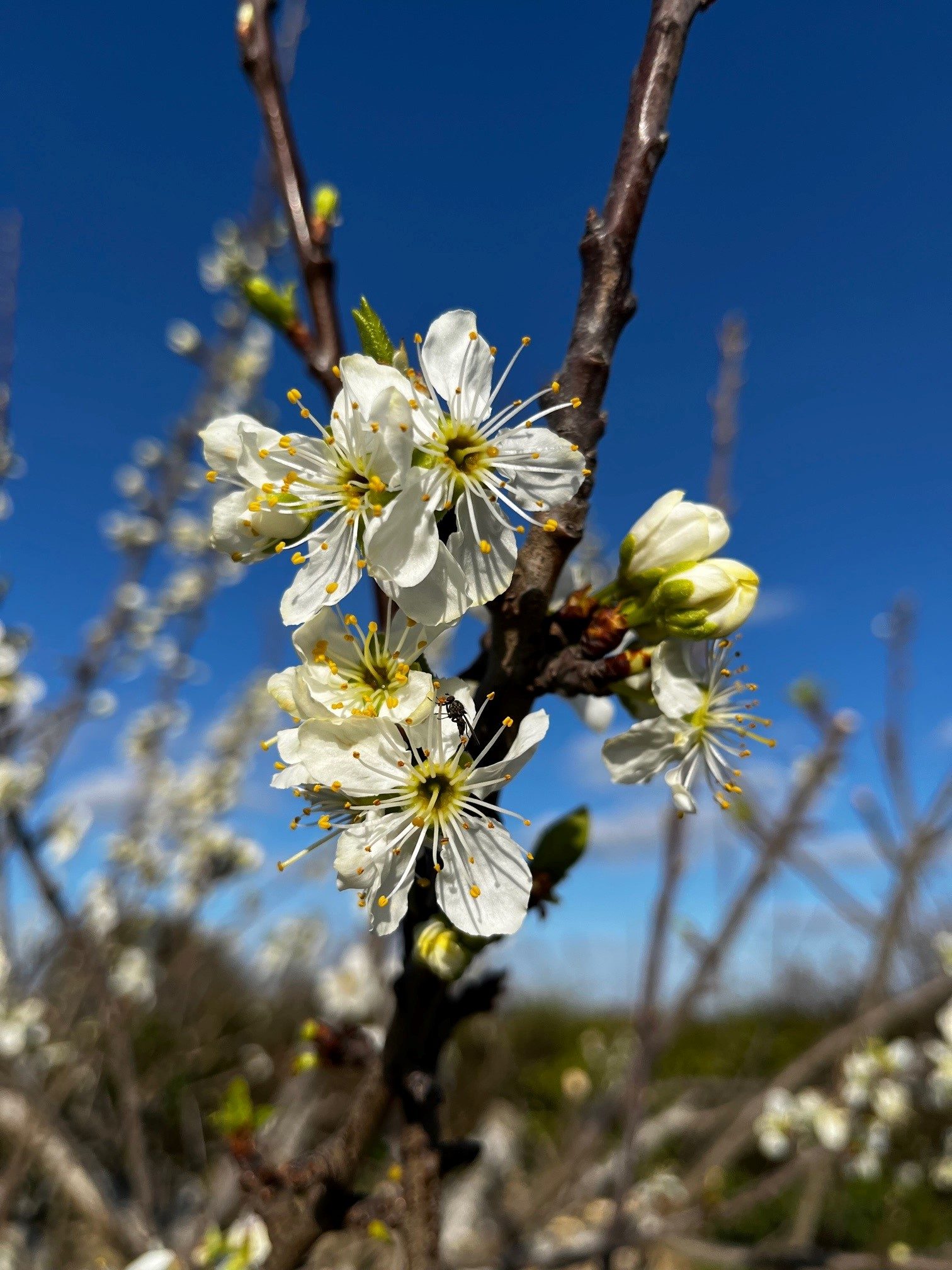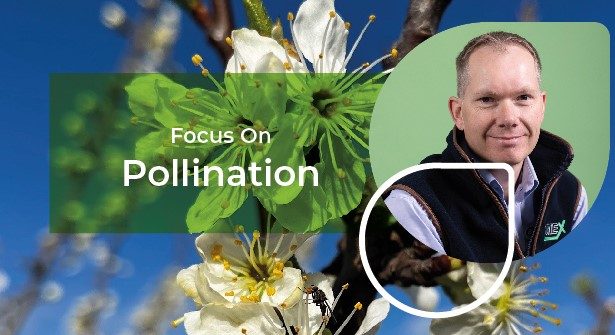Soft fruit agronomist, Neil Holmes, gives his latest nutritional update with a focus on pollination,
Top, stone and soft fruit are all in flower at present and optimal nutrition is required for complete pollination.
Nitrogen plays a key role in pollen quality, affecting fruit-bud differentiation, leaf growth (in the previous season) and subsequently, carbohydrate synthesis. Pollen itself is a packet of nitrogen rich amino acids which are required for the growth of the pollen tube. Foliar applications of urea in apples, which is present in Folex N (20% nitrogen), have been shown to improve fruit set when a deficiency is present.
Calcium is a key signalling nutrient, allowing effective pollen tube growth and fertilisation of the ovary. Poor movement of calcium at this time can lead to unsuccessful pollination and consequently, flowers can be dropped by the plant or tree. Support calcium movement in the plant by applying Calmax Ultra which is 22% CaO and includes the unique ingredient “AXM” which improves calcium movement during periods of poor transpiration.
 Figure 1 Plum flowers are open and ready for insect pollination
Boron has been shown to improve the germination of pollen once it lands on the stigma. Although it is required in minute quantities, it is worth assessing levels within the SAP to ensure pollination is optimised. Boron deficiency can also lead to malformation of strawberry fruits. If a deficiency is diagnosed, consider applying Folex B, which is 15% boron.
Finally, remember that open flowers are susceptible to botrytis infection. In strawberries botrytis can enter through the flower and travel down the peduncle to damage the whole truss. Consider supporting plant health with early season applications of Zynergy, rich in copper, sulphur and zinc.
For further information on SAP analysis or any of the products described above, contact your local OMEX technical manager to discuss pollination, here.
Figure 1 Plum flowers are open and ready for insect pollination
Boron has been shown to improve the germination of pollen once it lands on the stigma. Although it is required in minute quantities, it is worth assessing levels within the SAP to ensure pollination is optimised. Boron deficiency can also lead to malformation of strawberry fruits. If a deficiency is diagnosed, consider applying Folex B, which is 15% boron.
Finally, remember that open flowers are susceptible to botrytis infection. In strawberries botrytis can enter through the flower and travel down the peduncle to damage the whole truss. Consider supporting plant health with early season applications of Zynergy, rich in copper, sulphur and zinc.
For further information on SAP analysis or any of the products described above, contact your local OMEX technical manager to discuss pollination, here.
 Figure 1 Plum flowers are open and ready for insect pollination
Boron has been shown to improve the germination of pollen once it lands on the stigma. Although it is required in minute quantities, it is worth assessing levels within the SAP to ensure pollination is optimised. Boron deficiency can also lead to malformation of strawberry fruits. If a deficiency is diagnosed, consider applying Folex B, which is 15% boron.
Finally, remember that open flowers are susceptible to botrytis infection. In strawberries botrytis can enter through the flower and travel down the peduncle to damage the whole truss. Consider supporting plant health with early season applications of Zynergy, rich in copper, sulphur and zinc.
For further information on SAP analysis or any of the products described above, contact your local OMEX technical manager to discuss pollination, here.
Figure 1 Plum flowers are open and ready for insect pollination
Boron has been shown to improve the germination of pollen once it lands on the stigma. Although it is required in minute quantities, it is worth assessing levels within the SAP to ensure pollination is optimised. Boron deficiency can also lead to malformation of strawberry fruits. If a deficiency is diagnosed, consider applying Folex B, which is 15% boron.
Finally, remember that open flowers are susceptible to botrytis infection. In strawberries botrytis can enter through the flower and travel down the peduncle to damage the whole truss. Consider supporting plant health with early season applications of Zynergy, rich in copper, sulphur and zinc.
For further information on SAP analysis or any of the products described above, contact your local OMEX technical manager to discuss pollination, here. 